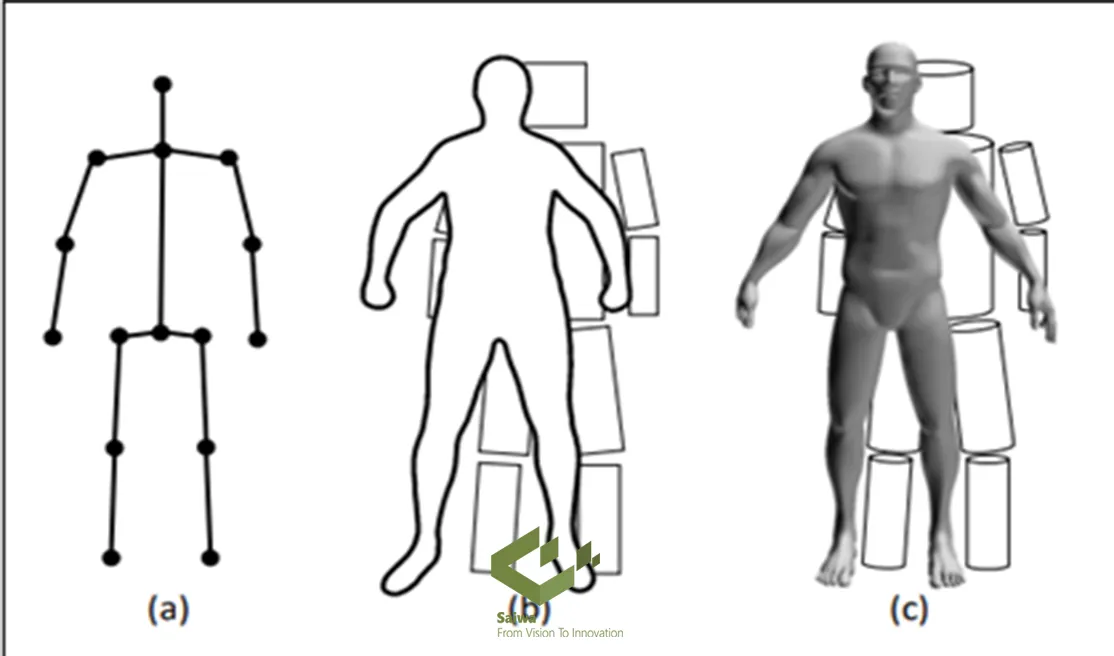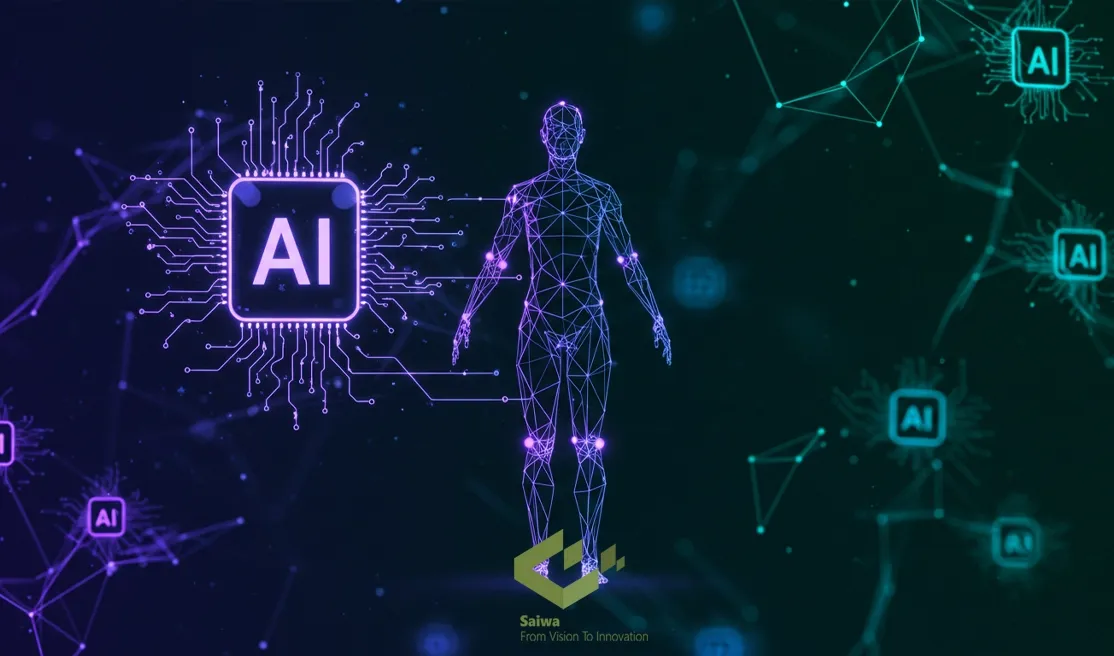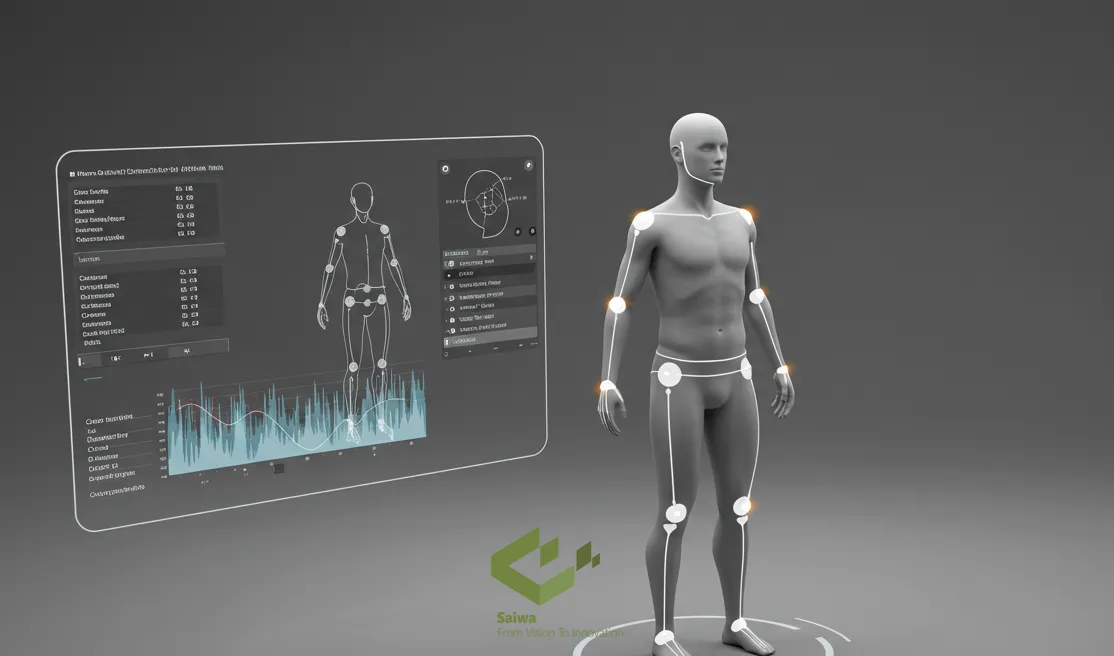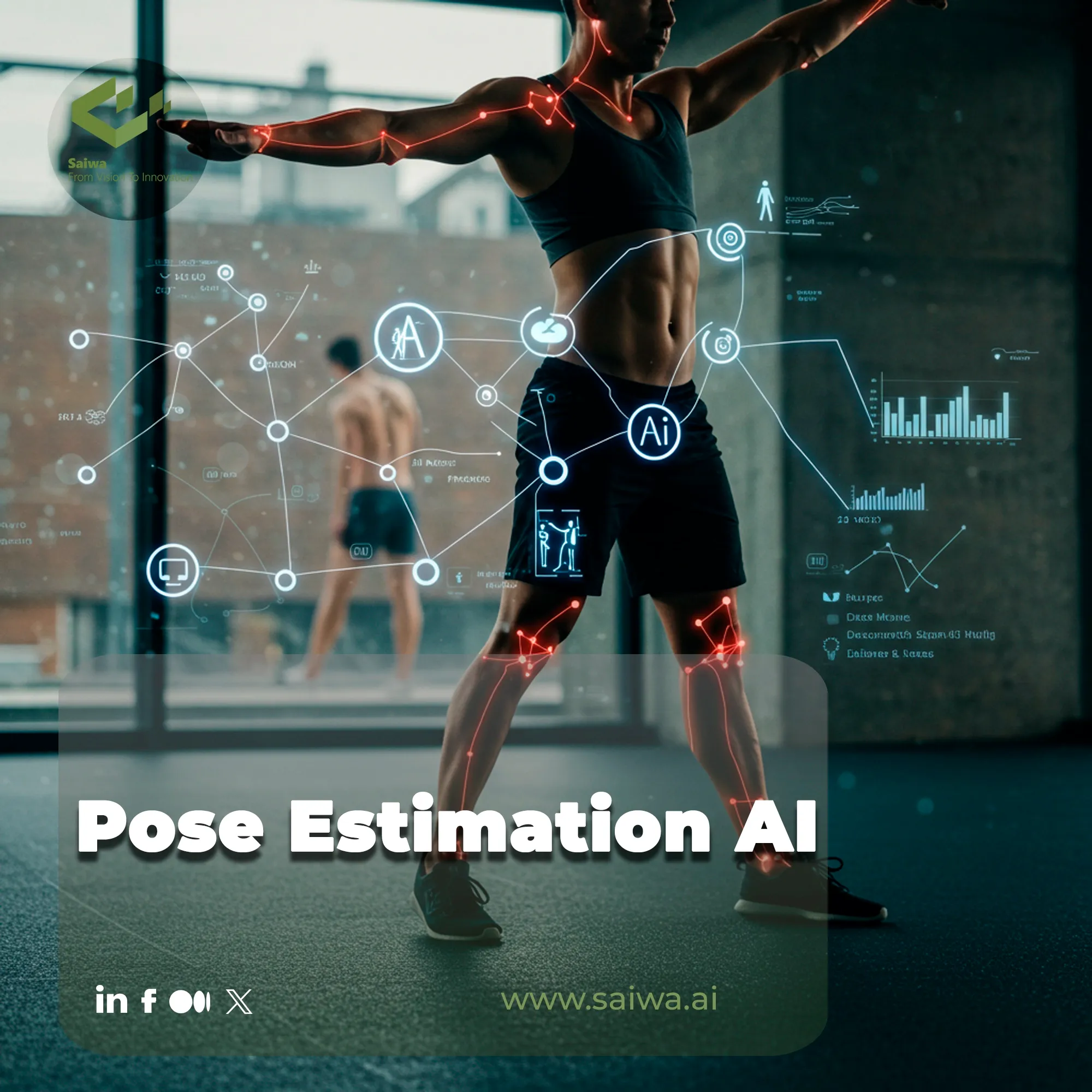Beyond simple object detection, which only identifies subjects with a box, lies the sophisticated world of motion analysis. This field requires a deeper understanding of human dynamics and involves interpreting not just presence, but also posture, movement, and intent. Technologies that facilitate this shift from sight to perception are revolutionizing human-machine interaction across industries.
Platforms like Fraime by Saiwa are at the forefront of this transformation, offering powerful yet accessible tools that translate complex visual data into practical, real-world solutions. This guide explores the core models and techniques that are transforming the way we analyze human motion.
What is Pose Estimation?
Pose estimation is a computer vision technique that identifies and tracks key points of a body such as joints and limbs in images or video. By connecting these points, a map is created that looks like a skeleton. This map shows posture, orientation, and movement. Models can do this as it happens, which makes it useful for analyzing motion patterns and responding to activity.
There are two main approaches: 2D pose estimation works on flat images, but it lacks depth. 3D pose estimation adds orientation and depth for greater accuracy. Most systems combine both to balance speed and precision. There are three common model types: skeleton-based, contour-based, and volume-based. The skeleton-based approach is the most widely used because it is efficient and adaptable.
The output often resembles a stick figure, which can then power applications in fitness, rehabilitation, sports analytics, security, augmented reality, and even lifelike avatars in gaming.

Core AI Techniques in Pose Estimation
The remarkable accuracy of modern pose estimation stems directly from advancements in neural network design. Instead of relying on rigid classical models, today's systems leverage deep learning to understand the subtle patterns of the human form in motion. These approaches primarily revolve around two key areas that have defined the field's trajectory.
Deep Learning Architectures
At the heart of this field are two dominant strategies. Top-down methods first identify individuals in an image and then estimate the pose for each one, a technique exemplified by models like AlphaPose.
Conversely, bottom-up approaches, such as the influential OpenPose, detect all key body joints within an image first and then intelligently assemble them into distinct skeletons. This process results in precise Skeleton detection, forming the structural backbone for higher-level activity analysis and motion tracking.
Hybrid and Explainable Approaches
The latest innovations move towards hybrid models, such as those found in the YOLO family, which integrate single-pass detection with pose estimation for enhanced speed and real-time application.
Simultaneously, there is a growing emphasis on explainable AI (XAI). This enables developers to understand how a model arrives at its conclusions, building trust and facilitating debugging, a crucial step for deploying these systems in sensitive or mission-critical applications.
Challenges in Pose Estimation Solved by AI
While incredibly powerful, implementing pose estimation AI is not without its difficulties. Real-world visual data is often messy, unpredictable, and complex. Overcoming these obstacles is where advanced algorithms truly demonstrate their value, turning potential failure points into addressable challenges. Below are five key problems that modern AI models are engineered to solve.

Dealing with Occlusion and Missing Joints
Models now intelligently infer the position of hidden body parts based on the visible joints, using contextual information to complete the skeleton.
Handling Complex and Unconventional Poses
Advanced training on diverse datasets allows AI to accurately map intricate poses seen in sports, dance, or physical therapy.
Improving Multi-Person Pose Estimation
Techniques like Part Affinity Fields (PAFs) help algorithms correctly associate limbs with the right individuals, even in crowded scenes.
Achieving Real-Time Performance
Optimized models like YOLO-Pose and Google's MediaPipe are designed for efficiency, enabling applications on edge devices like smartphones and cameras.
Bridging the Gap to 3D Pose Estimation
While 2D pose is standard, AI is increasingly capable of predicting depth to create 3D skeletons, unlocking immersive VR/AR and precise biomechanical analysis.
From Vision to Precision: How Fraime Elevates Pose Estimation with AI
Developing and deploying a robust pose estimation pipeline from scratch is a significant technical undertaking. For developers and businesses looking to integrate this capability without the massive overhead, Saiwa’s Fraime platform offers a powerful solution.
By providing pose estimation as a streamlined AI-as-a-Service, Fraime allows you to leverage sophisticated models like OpenPose and MediaPipe through a simple API call. This is ideal for building next-generation applications in interactive fitness, ergonomic safety analysis, and retail customer behavior.

Conclusion
The evolution of pose estimation AI marks a pivotal shift from merely seeing to truly understanding motion. What was once confined to research labs is now an accessible and transformative tool. By overcoming core challenges in occlusion and real-time processing, this technology is unlocking new efficiencies and insights across countless industries.
Note: Some visuals on this blog post were generated using AI tools.

